 - fractional citation tool
- fractional citation tool
A selection of bibliometric statistics for some prominent scientists
It is interesting to show some statistics from fCite for the most important scientists. Overall, this is the ultimate goal of all bibliometric analyses: to identify those who have contributed the most to science. One of the most recognized of such attempts is a list created by Clarivate Analytics called Highly Cited Researchers (HCR). Thus, let us select a group of scientists from (and outside) the list and see the results.
fCite (among many) displays:
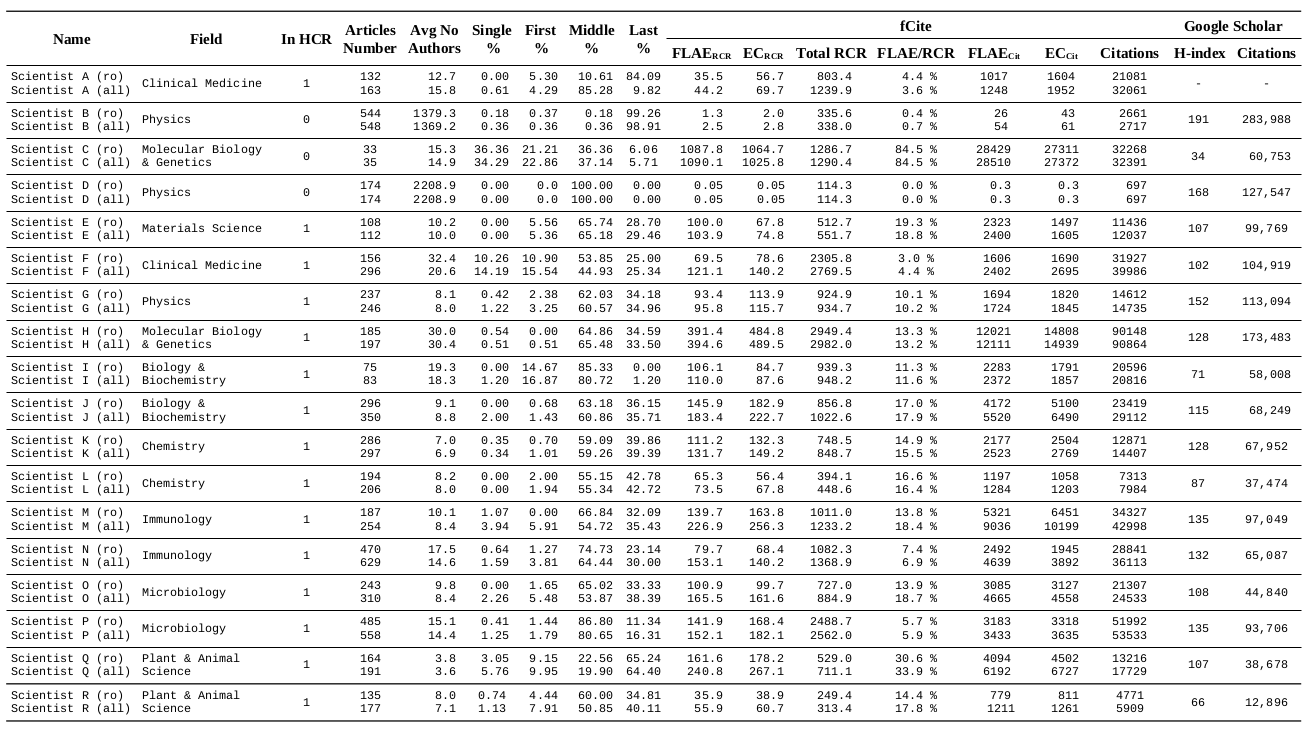
In HCR – the researchers included on the 2018 Highly Cited Researchers list
ro/all – 'research only' or 'all articles'
Conclusions:

In HCR – the researchers included on the 2018 Highly Cited Researchers list
ro/all – 'research only' or 'all articles'
- The HCR list contains a blend of very different scientists (the citations from the Google Scholar score can differ by 10x - 30x).
- The HCR list was filtered in easy cases (e.g., the scientists from High Energy Physics were removed even though they can have hundreds of thousands of citations, but they co-author only 'ultra-multi-author papers'; see Scientists B and D).
- Unfortunately, the HCR list still contains some artefacts, e.g., scientists with an average contribution of ~3% (frequent in Clinical Medicine).
- While the HCR list aggregates the most cited scientists, little has been done to compare within this group (the only information known is how many highly cited papers they co-authored). You know very little about the people on the list, and you can only assume that they have many citations and a high H-index.
- Using fCite, you can easily compare any scientists you wish; for instance the H-index values for Scientists M and N are almost identical. By checking the number of citations, you start to suspect that Scientist M is slightly better, but after profiling by fCite, you see that there is a substantial difference between those two. The former is at least twice as good as the latter (compare, for instance, the FLAE/RCR ratio, FLAECit, the number of papers, their division into research and non-research contributions, etc.).
- As the major condition to be included in the HCR list is to be the (co-)author of as many as possible of the top 1% of cited publications (almost regardless of the number of the authors), the list misses some of the world’s outstanding scientists (e.g., Scientist C has an FLAERCR of over 1000 derived from just 33-35 articles!!!).
- However, another key feature of fCite is the possibility to create a profile ad hoc; for instance, Scientist A does not have a Google Scholar profile (as is the case for many prominent, old-school scientists), and it would be difficult to assess such a person, but with fCite, this takes only a matter of minutes to do.
Detailed statistics for the above scientists
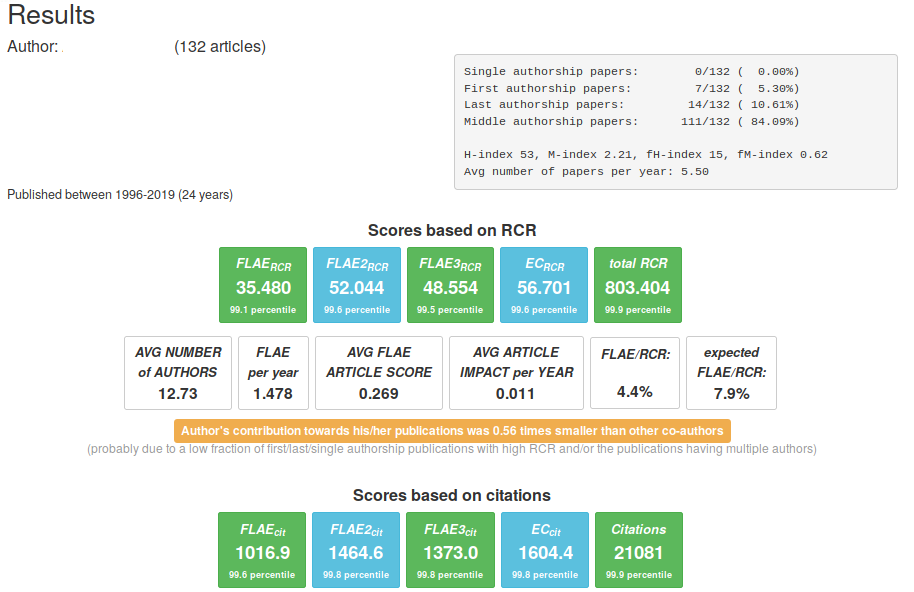
Research only |
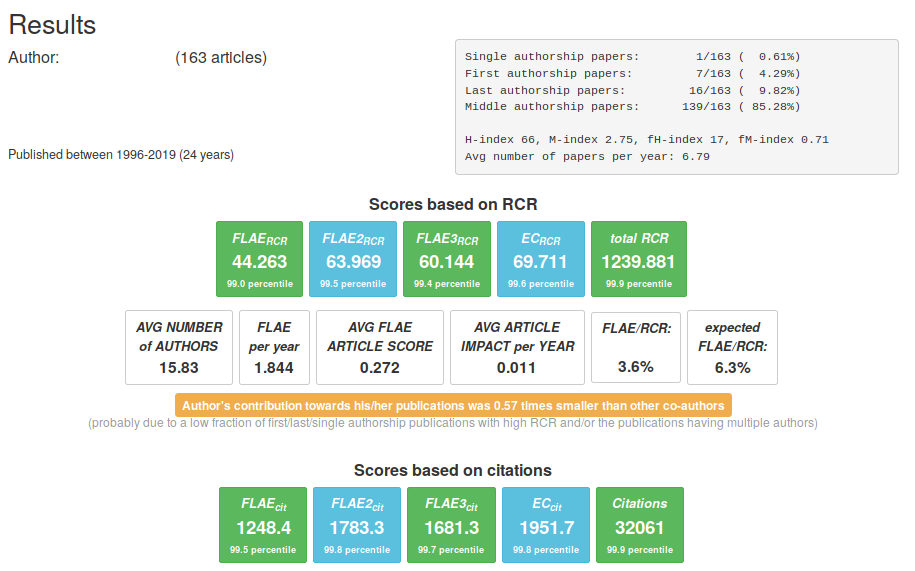
All items |
|---|
Scientist A
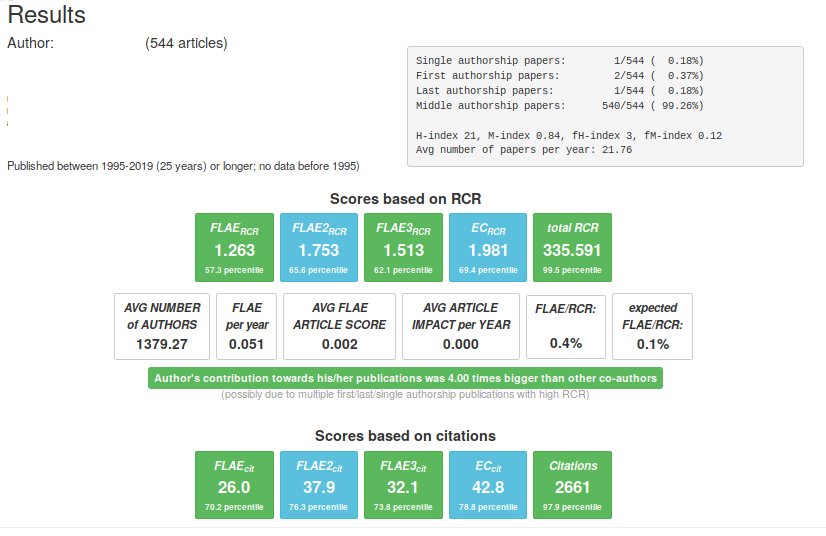
Research only |

All items |
|---|
Scientist B
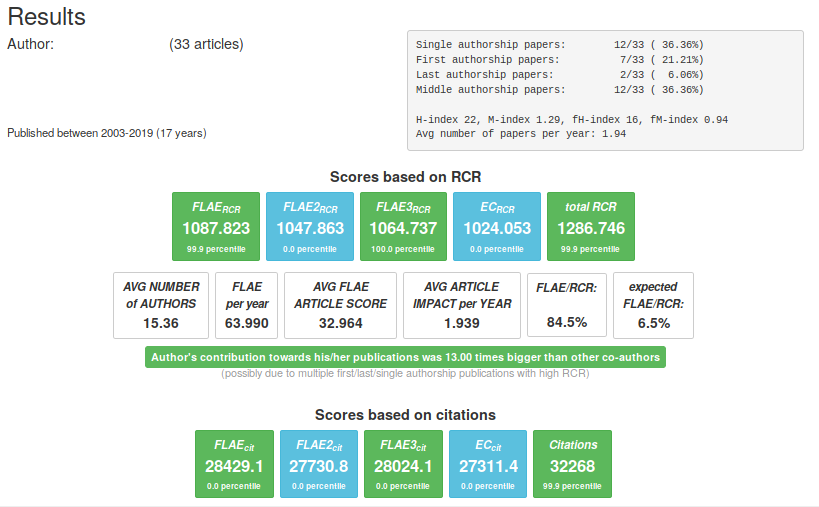
Research only |
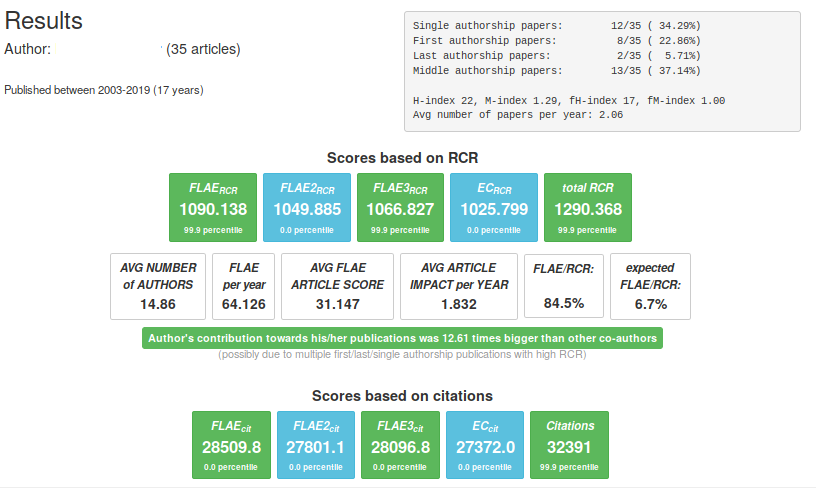
All items |
|---|
Scientist C
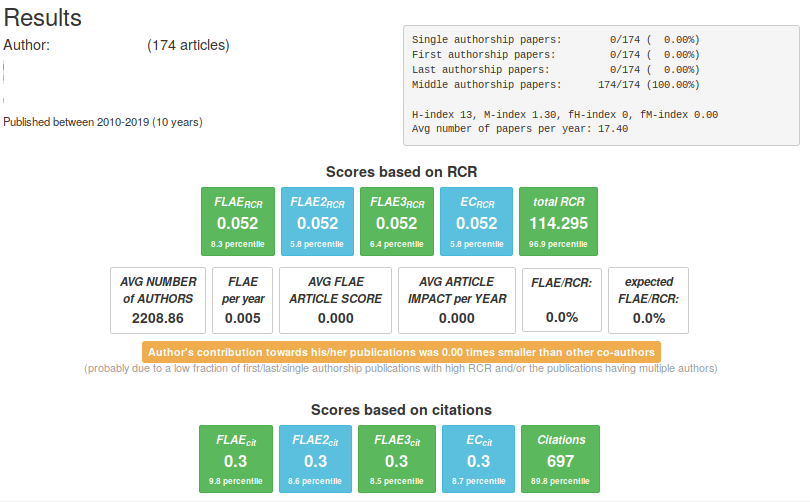
Research only |
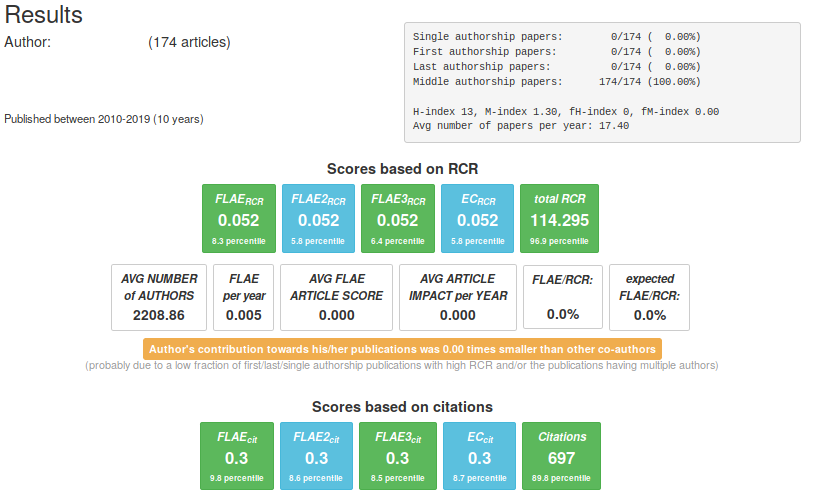
All items |
|---|
Scientist D
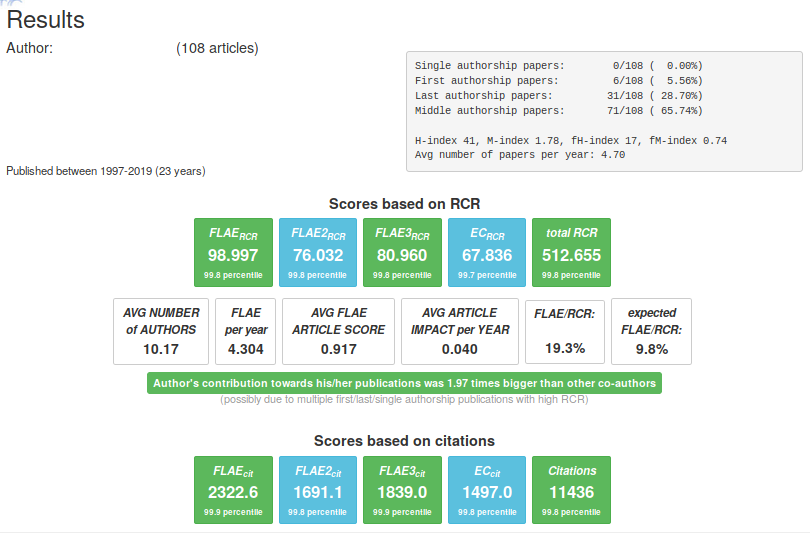
Research only |
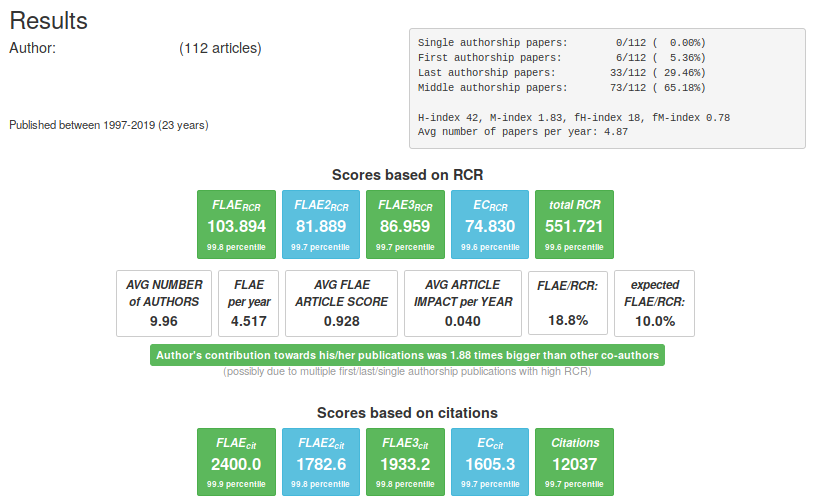
All items |
|---|
Scientist E
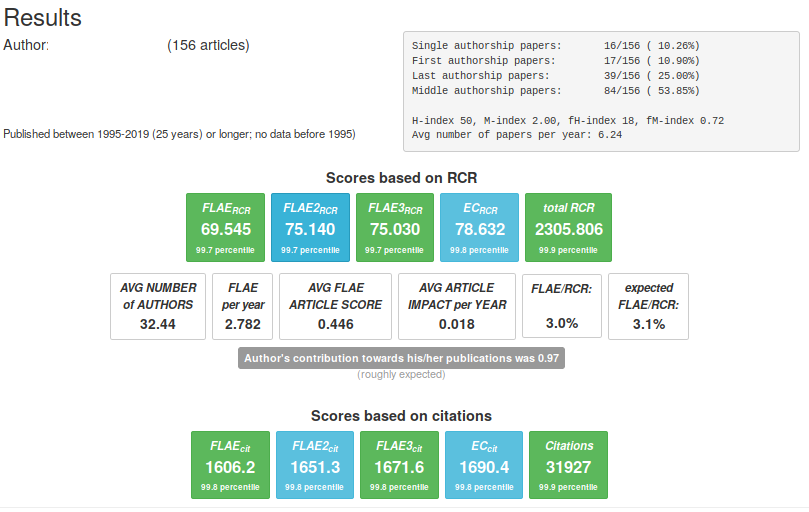
Research only |
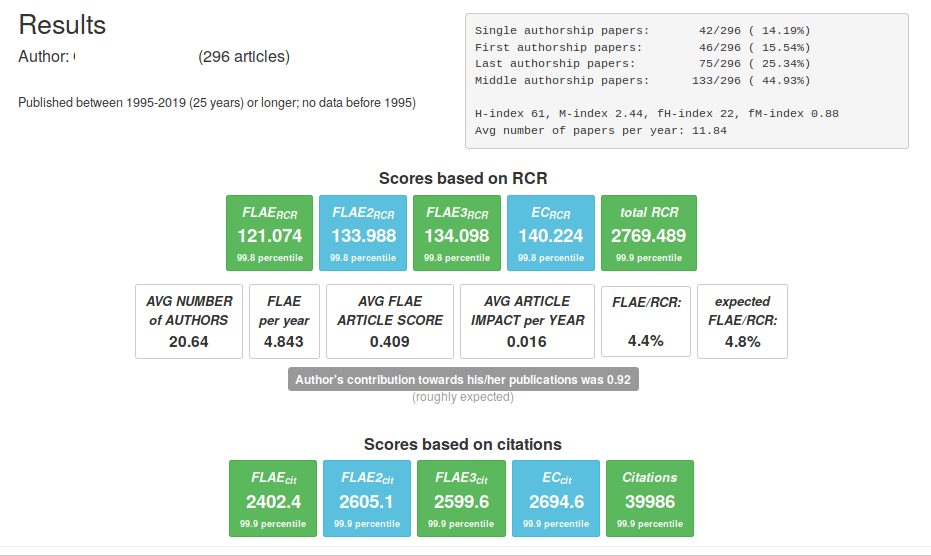
All items |
|---|
Scientist F
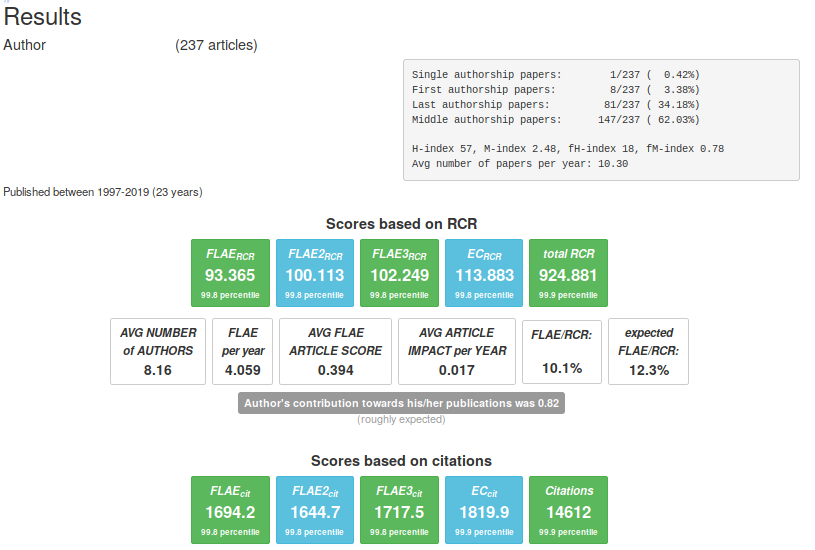
Research only |
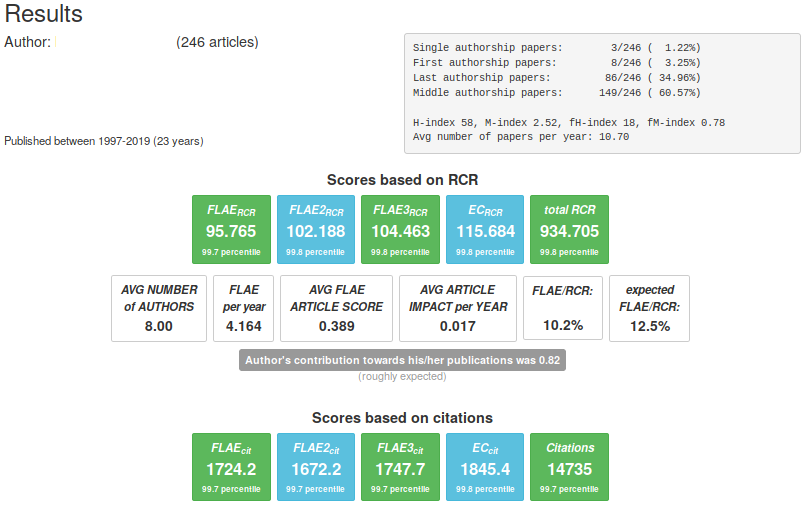
All items |
|---|
Scientist G
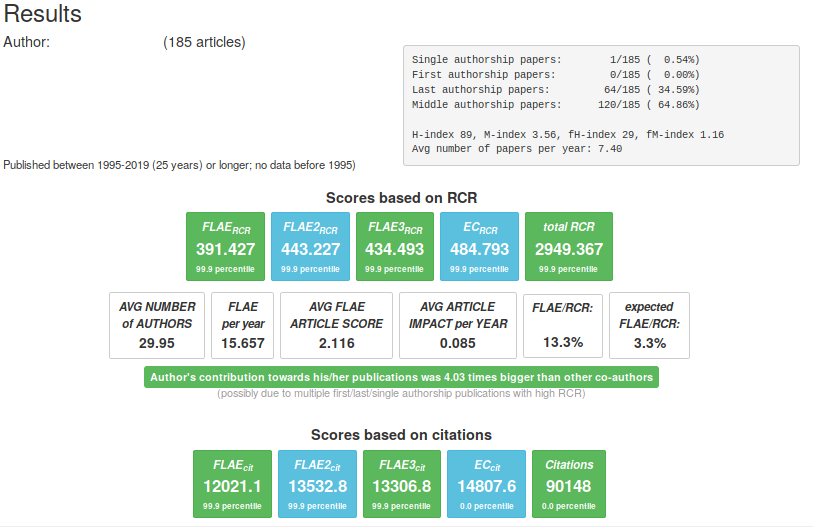
Research only |
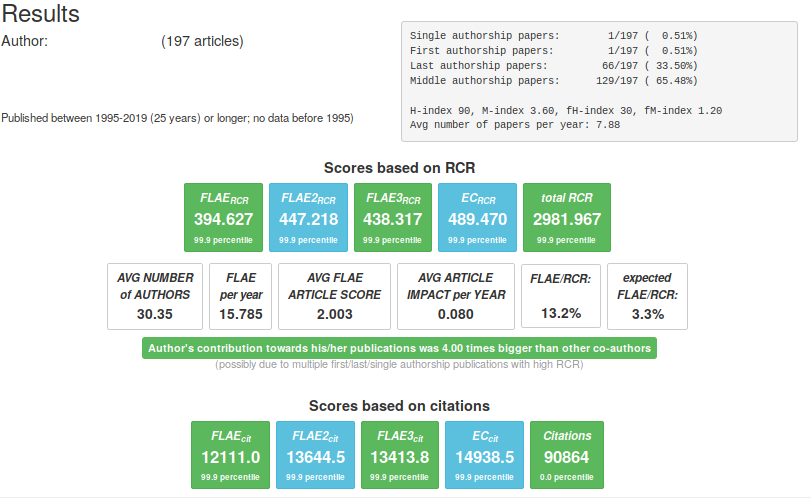
All items |
|---|
Scientist H
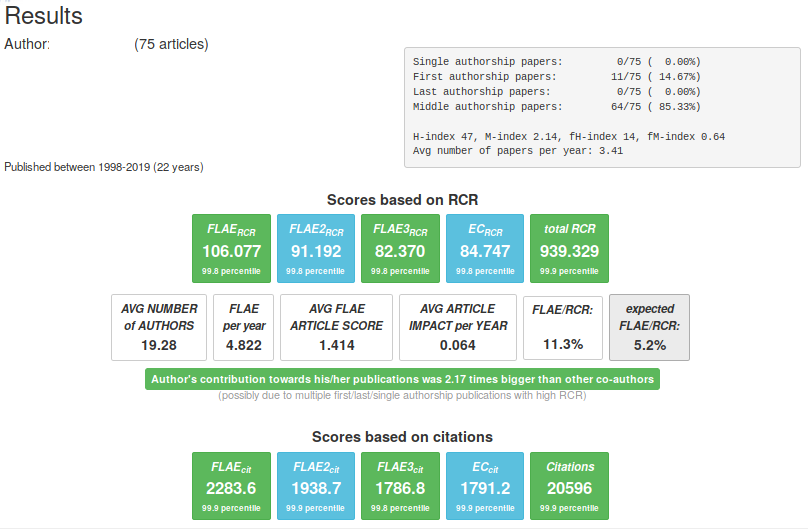
Research only |
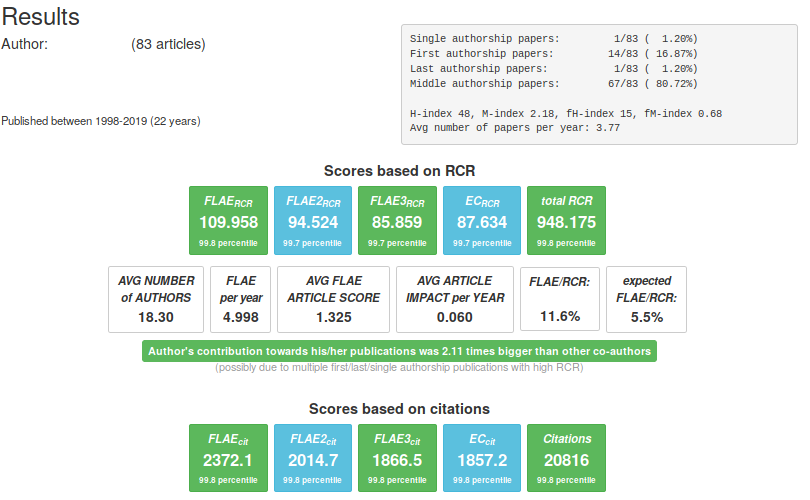
All items |
|---|
Scientist I
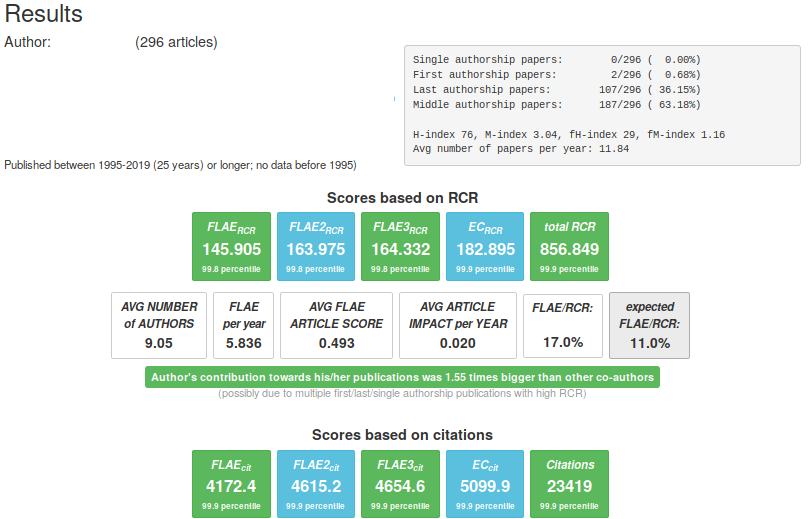
Research only |
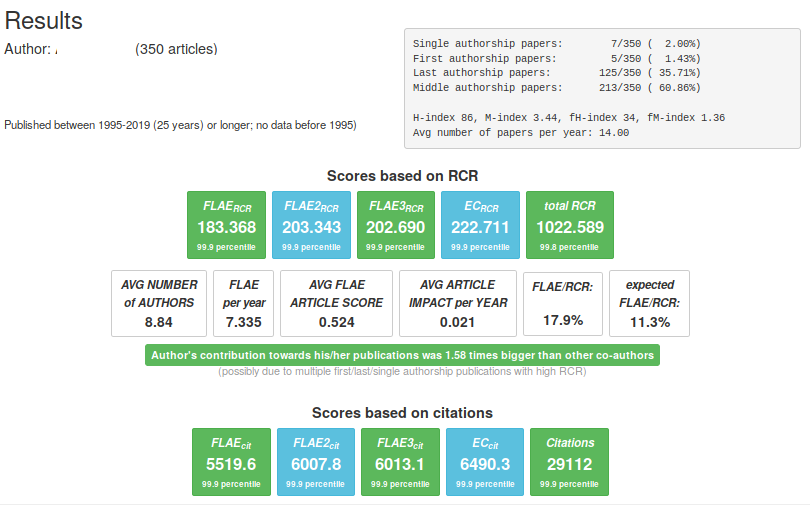
All items |
|---|
Scientist J
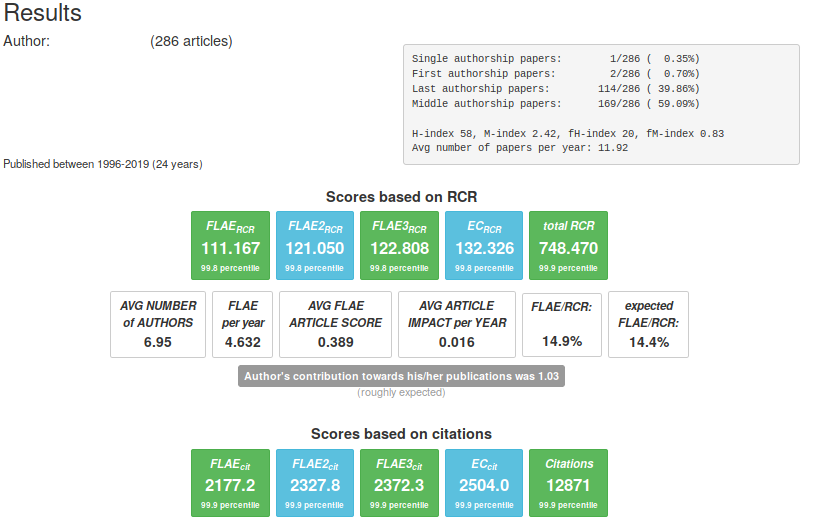
Research only |
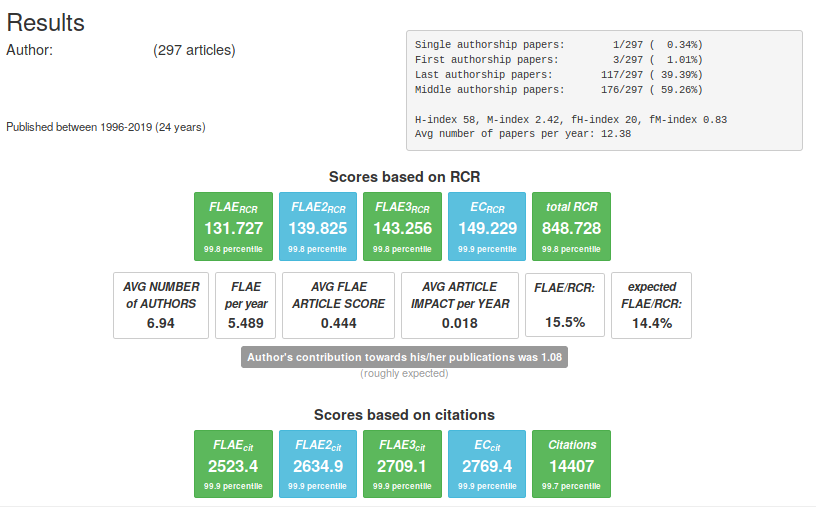
All items |
|---|
Scientist K
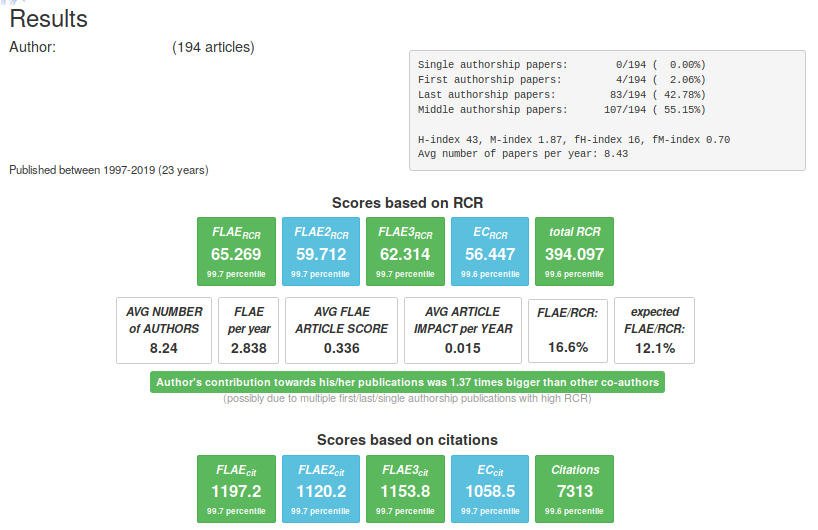
Research only |
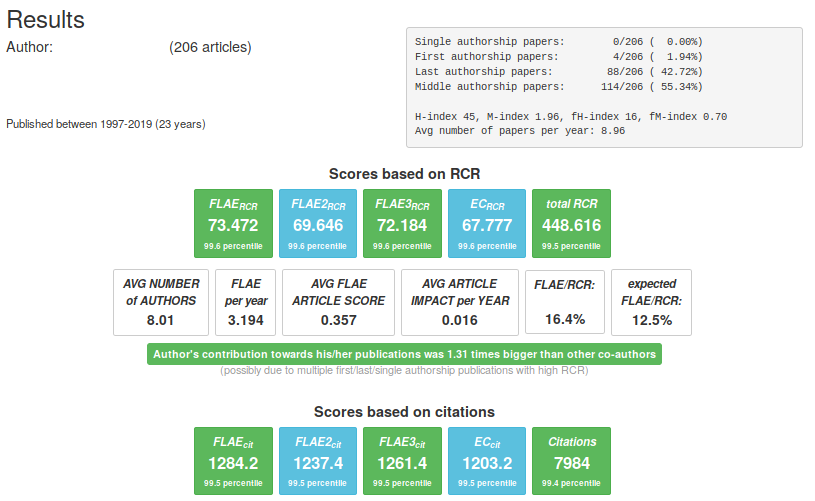
All items |
|---|
Scientist L
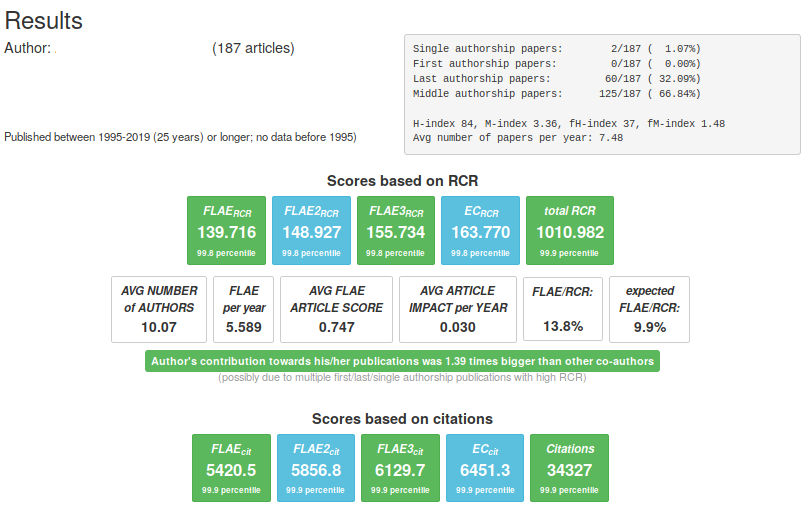
Research only |
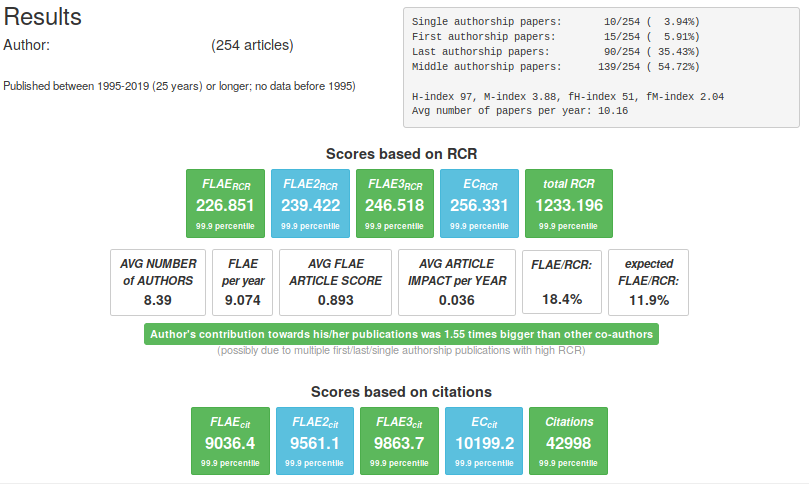
All items |
|---|
Scientist M
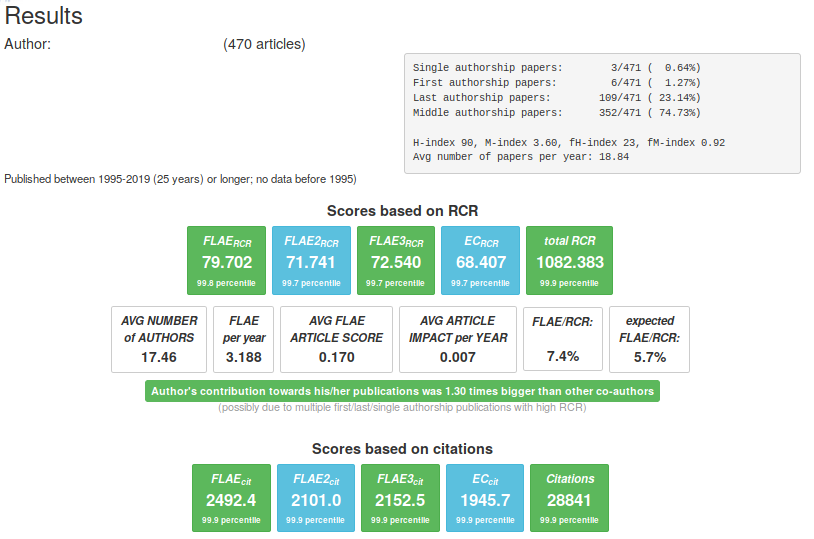
Research only |
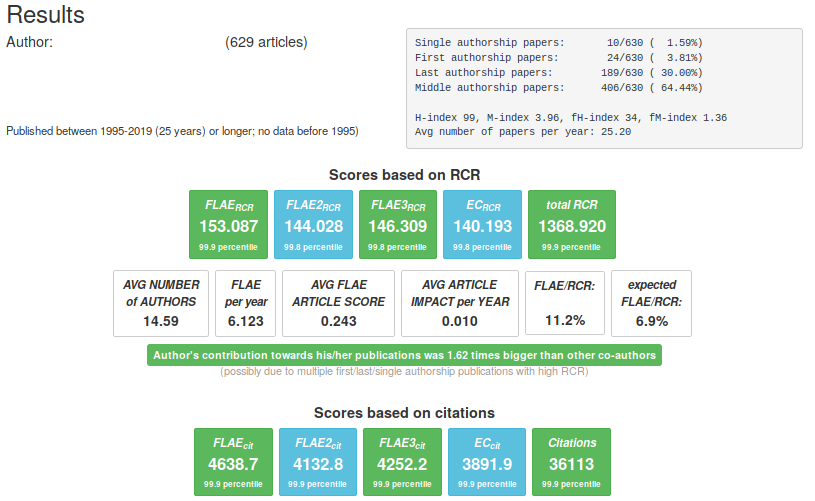
All items |
|---|
Scientist N
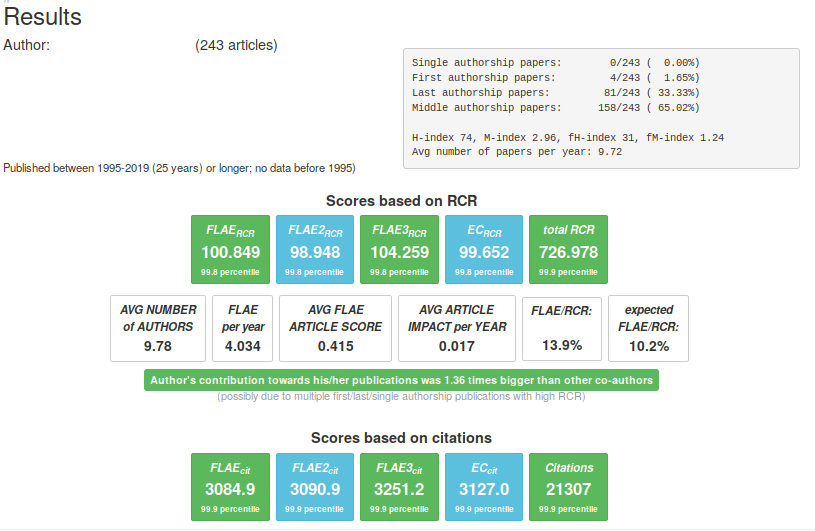
Research only |
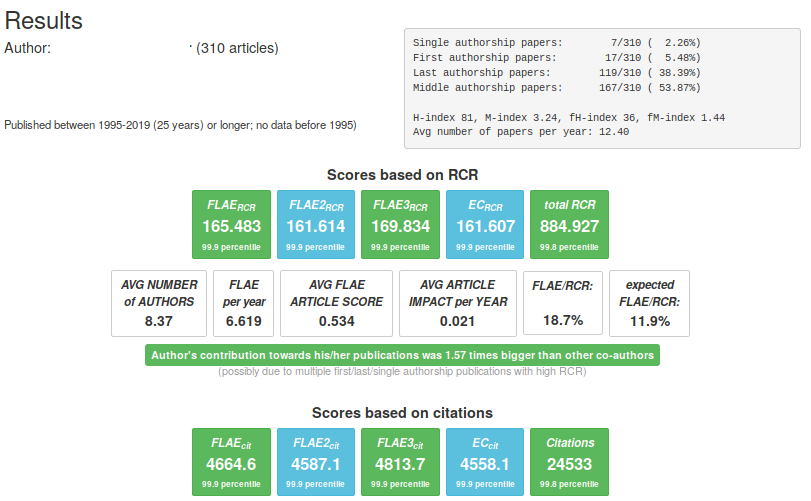
All items |
|---|
Scientist O
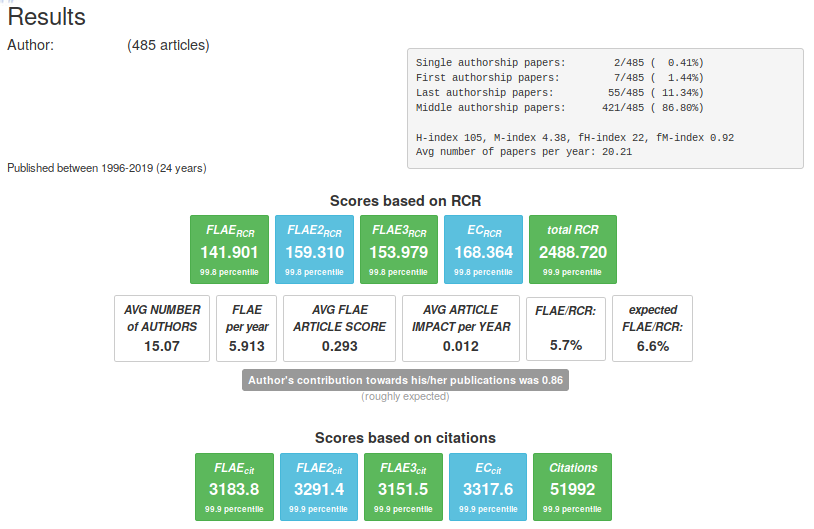
Research only |
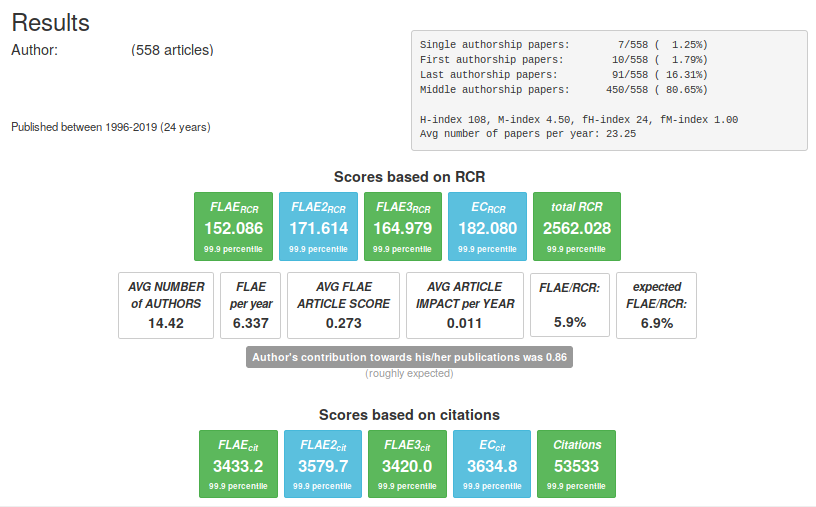
All items |
|---|
Scientist P
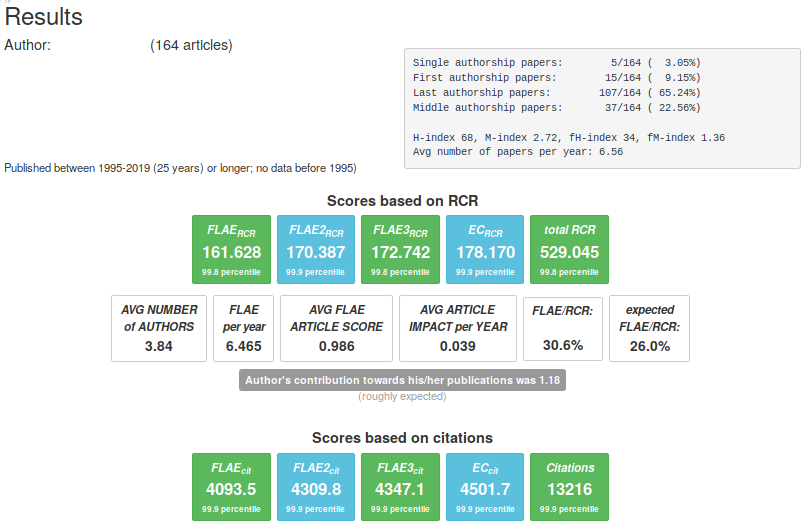
Research only |
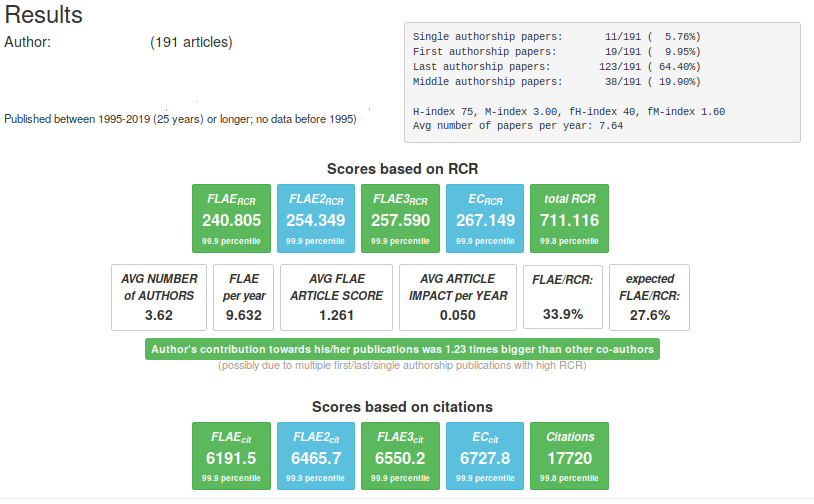
All items |
|---|
Scientist Q
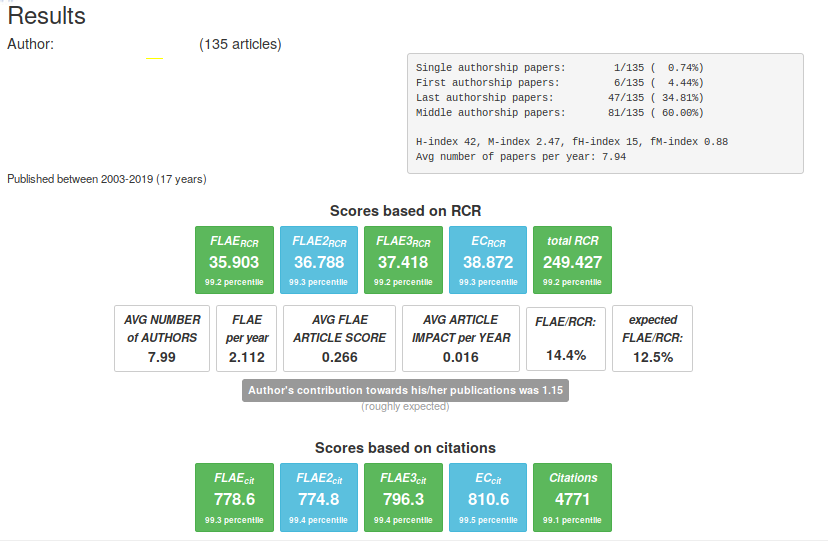
Research only |
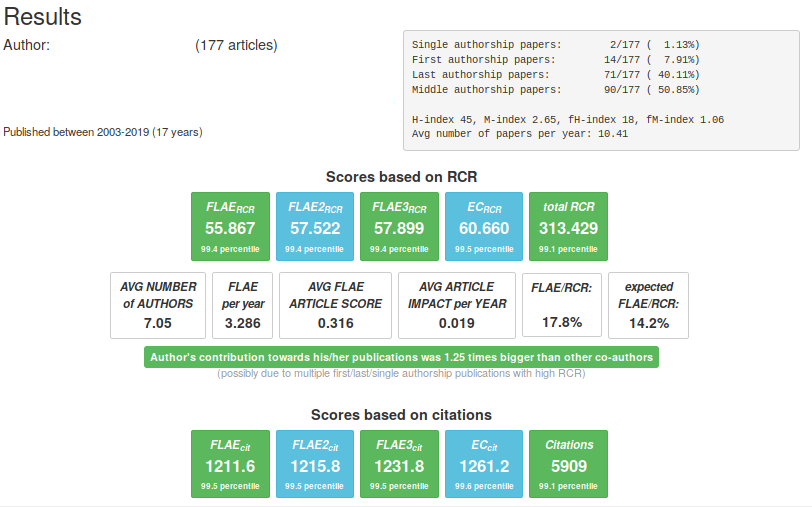
All items |
|---|
Scientist R